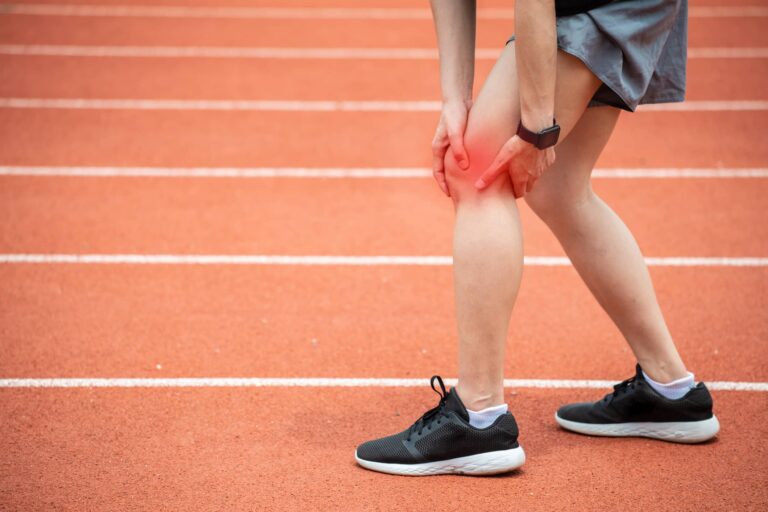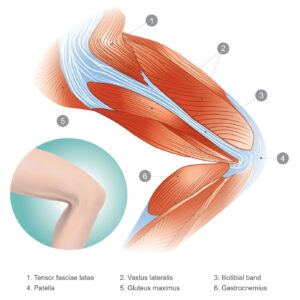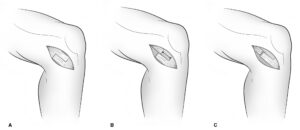Iliotibial Band Syndrome (IT Band Syndrome) is a frequent source of discomfort in the outer thigh, knee, and hip, particularly among athletes and runners. This overuse injury arises from repetitive friction involving the iliotibial band, a thick band of connective tissue extending along the outer side of the hip and knee. While overtraining and improper training techniques are the most common culprits, underlying physical conditions, such as skeletal misalignment, can also contribute to its development.
In most cases, IT Band Syndrome does not require surgical intervention. The condition is typically treated through a combination of rest, targeted physical therapy, and a carefully structured return-to-activity plan.
Anatomy
The iliotibial (IT) band is a strong, fibrous band of connective tissue that stretches along the outer thigh, connecting the hip to the knee. This essential structure plays a key role in stabilizing both the hip and knee joints during activities like walking and running.
Iliotibial band anatomy
Description
Iliotibial Band Syndrome (IT Band Syndrome) develops when the IT band becomes irritated, often due to repetitive friction against the lateral (outer) side of the knee. This friction can inflame the bursa, a fluid-filled sac that allows the IT band to move smoothly over the bony prominence at the knee, leading to discomfort and pain.
In addition to knee pain, the IT band can cause irritation on the outer side of the hip at the greater trochanter. This condition, known as trochanteric bursitis, involves inflammation of the bursa near the hip bone, resulting in pain and tenderness in the area.
Cause
Iliotibial Band Syndrome (IT Band Syndrome) is an overuse injury frequently affecting runners, cyclists, and athletes engaged in repetitive knee-flexing activities. The primary contributors to this condition include improper training practices and certain physical predispositions that increase vulnerability to injury. Key factors are outlined below:
Training Mistakes:
- Abrupt increases in training intensity or volume
- Wearing shoes with inadequate support
- Insufficient recovery time between training sessions
- Running on uneven or sloped surfaces
- Neglecting stretching and cross-training exercises
Physical Conditions:
- Discrepancies in leg length
- Bowed legs
- Knee osteoarthritis
- Weak core, hip, and gluteal muscles
- Poor flexibility or tightness in leg muscles
Addressing these risk factors through proper training techniques, supportive footwear, and targeted strengthening exercises can help prevent the onset of IT Band Syndrome.
IT band syndrome is a common injury in runners.
Photos showing an iliotibial band-specific stretching regimen (A through C) and the Ober stretch (D), which is designed to lengthen the ITB.
Surgical Treatment
In rare cases where nonsurgical approaches are ineffective, surgical intervention may be necessary to address Iliotibial Band Syndrome. The choice of surgical method depends on the underlying cause of the condition. Common procedures include soft-tissue excision, IT band excision, and IT band lengthening.
Soft-Tissue Excision
For patients experiencing inflammation of the soft tissues around the hip due to IT band friction, a minimally invasive procedure called arthroscopy may be performed.
- Tiny incisions are made to insert a camera and surgical instruments.
- Inflamed bursal tissue and portions of the IT band contributing to the irritation are removed.
IT Band Excision
In cases where degenerative tissue in the IT band is causing persistent symptoms, a partial excision may be performed.
- An incision is made on the outer side of the knee or hip.
- The damaged and inflamed portion of the IT band is surgically removed.
- The incision is closed using sutures or staples to ensure proper healing.
IT Band Lengthening
To reduce friction around the knee and hip, the IT band may be lengthened through a specialized procedure.
- A small incision is made, typically over the hip area.
- The IT band is identified, and a z-shaped incision is created to extend its fibers.
- This modification reduces tension and allows smoother movement over the knee.
- The lengthened fibers are carefully repaired, and the incision is closed.
Each surgical approach is tailored to the patient’s unique needs, and recovery typically involves a combination of rest, physical therapy, and a gradual return to physical activity.
Illustration showing the iliotibial band lengthening procedure. Two incisions are made halfway across the width of the ITB (A) and are connected with a third incision (B). The ITB is then repaired in a lengthened position (C), typically gaining 1.5 cm in length.
Recovery
- Recovery in patients with IT band syndrome who have been treated with conservative methods depends largely on the severity and duration of their condition. However, most patients are able to recover and return to running within 6 weeks of treatment.
- Recovery in patients who undergo surgery may take up to 3 months. It is recommended that athletes return to their activity gradually. Returning too soon can lead to persistent symptoms and a potential risk of other injuries.









